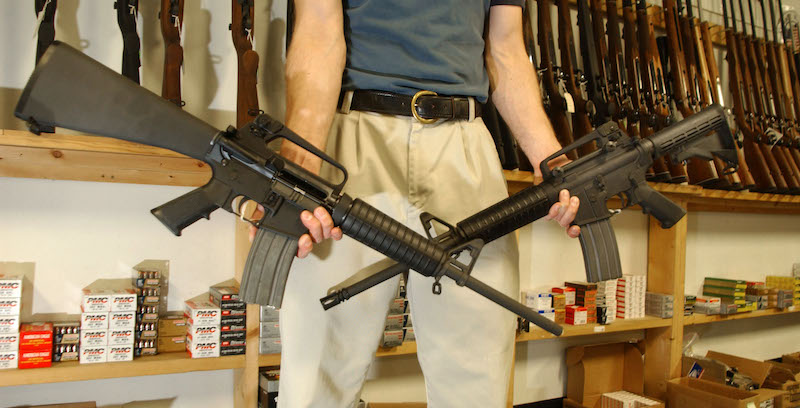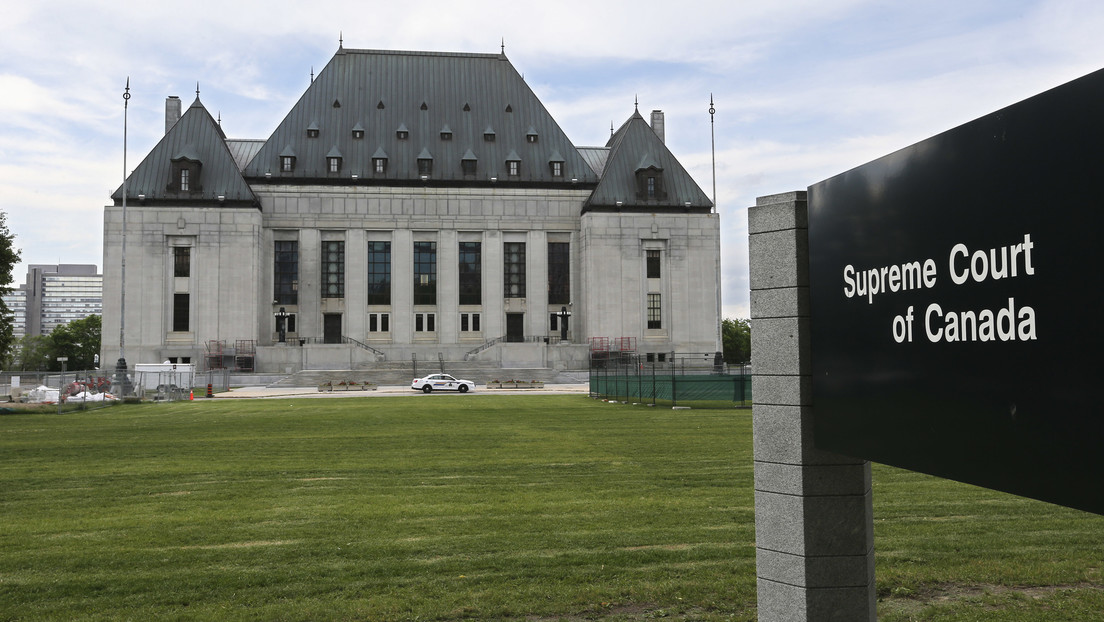Salvador Ramos, the eighteen year old author of the massacre in the primary school of Uvalde, in Texas, had purchased two AR-15 type assault rifles in the week prior to the shooting. One was found in the car with which he had made an accident shortly before entering the school, the other is, according to police reconstructions, the weapon with which he committed the massacre.
It is a “Daniel Defense DDM4 V7” semi-automatic rifle, shown in the previous days by Ramos in private chats to some acquaintances, together with the receipt for 1,870 dollars plus taxes. Made in Georgia, the “Daniel Defense DDM4 V7” is a high-end model of the AR-15 semi-automatic rifles, which have been used to commit much of the mass slaughter of the last decade in the United States.
The AR-15 rifle can be legally purchased by anyone over 18 years of age upon presentation of an identity document (for a gun, however, in most American states you must be 21 years old). This kind of weapon was used in almost all the great massacres of recent years: Sandy Hook Elementary School (2012, 27 deaths), San Bernardino (2015, 14 deaths), Pulse nightclub in Orlando (2016, 49 deaths), Sutherland Springs Church (2017, 26 deaths), Las Vegas (2017, 58 deaths), Stoneman Douglas High School (2018, 17 deaths).
According to firearms experts, the main reason for such a constant presence is its popularity among gun owners, to which is added a certain emulation effect among the various attackers.
The sale of the AR-15s had been banned between 1994 and 2004 with the banning of semi-automatic weapons launched during the presidency of Bill Clinton, but the failure to renew the ban has made the rifle very popular in recent years, until it became almost a symbol of American gun culture.
The National Shooting Sports Foundation has estimated that there are about 20 million AR-15 rifles in circulation in the United States, out of a total of nearly 400 million firearms, but since 2015 this kind of semi-automatic represents about 20 percent of total sales. However, there are no official numbers because a federal law prohibits keeping a timely register of weapons sold and in circulation.
The use of the AR-15s in mass killings in the United States periodically reopens the debate on the advisability of providing civilians with such lethal and purely warlike weapons.
Assault rifles were born during the Second World War, when Nazi Germany introduced the Sturmgewehr, a light rifle with a large magazine that allowed to fire both a single shot and a burst. From that first model, first the Soviet Kalashnikov (AK47), with its 30-round magazine, then the US M-16, famous for its use during the Vietnam War, would have developed.
The M-16 was actually a military evolution of the AR-15 rifle, developed in the late 1950s by a former marine for a small manufacturer called ArmaLite. The acronym AR stands for ArmaLite, even if it would later be interpreted as “assault rifle” or “America’s rifle” (American rifle), contributing to the myth among certain parts of the American public.
The AR-15 design was sold almost immediately to Colt, the only company that can still sell this type of product under that name today. The rifles of other manufacturers (today there are about 500 models), similar in all, are defined as “type AR-15”. They are sold to hunters and sports shooting enthusiasts at the range, as well as to gun lovers for whom the possession of an assault rifle often has a symbolic meaning and belonging.
Compared to the automatic military versions, which can fire 750-900 bullets per minute, the AR-15s fire a single bullet each time the trigger is pulled, but the reload is extremely fast, enough to allow 40-60 rounds per minute. Their operation and appearance are very similar to those of the models reserved for the military, which makes them familiar to those who have had experience in the military or the police force.
Another reason for popularity is to be found in the great possibilities of customizing the weapon: the length and size of the barrel can be changed, as well as the handle; accessories such as silencers, sights, spotlights, laser pointers, grenade launchers, bayonet-style blades, tripods can be added to the basic model. These are almost “modular” weapons: modifications and additions are popular among enthusiasts who like to “customize” objects (as is done with cars) and contribute to making rifles very profitable for manufacturing companies. Experts also report that illegal modifications are also relatively easy, such as the one that made the San Bernardino bomber’s weapon a military-type automatic.
Other features that have facilitated its diffusion are the relative simplicity of use guaranteed by a limited recoil (the backward movement of the weapon once the shot is fired), and the possibility of mounting “high capacity” magazines, that is, equipped more than ten shots. Only a few US states, including New York and Connecticut, have banned this type of magazine, which remains legal in most of the others: the most common are the “banana” ones, with 30 rounds, but the “drum” ones can contain them. up to 100. Inside the Texan school hit by Salvador Ramos, seven 30-rounds were found.
AR-15s are very popular on the market and therefore easy to find. They also have a low cost. If that of the perpetrator of the Uvalde massacre cost $ 2,000, a Colt model can be bought for half and a low-end model for less than $ 300.
The other peculiarity of this type of rifle is their high lethality: they are weapons designed to kill and do not require great precision when fired. The big news, at the time of introduction on the market, was that the AR-15s used bullets of smaller caliber (therefore smaller and lighter) but able to travel at much greater speed. They were stable in the air but less stable when they came into contact with bodies. Larger caliber bullets also have a linear trajectory within the body, with a similar entry and exit hole and a straight line path.
The .223 caliber bullets of the AR-15s behave differently, like had explained toAtlantic Heather Sher, radiologist who analyzed the injuries of the victims of the Marjory Stoneman Douglas high school shooting. “Gunshot wounds such as handguns are often not fatal unless they hit a vital artery or organ. Those caused by assault rifles no, because they arrive with a greater speed and therefore greater energy, creating much more substantial damage to the tissues ». Sher says they can do damage for several inches around the trajectory and that the exit hole can be “as big as an orange”. This means that the injured rarely make it to the hospital alive: a feature that, combined with the ability to shoot repeatedly in a short time, makes this type of weapon considerably more dangerous than others.
Precisely for this reason, already in 1994, a regulation of assault weapons was also reached in the United States: the “Federal assault weapons ban”, passed in the Senate with a minimum majority (52 votes to 48 ) and signed by Bill Clinton, imposed restrictions on the manufacture and sale of magazines of more than ten rounds and prohibited the sale of various models of assault rifles, including the AR-15. The provision had a defined duration of ten years, at the end of which the Senate would have had to renew or re-discuss it. On 13 September 2004 it was expired and subsequent attempts to reintroduce it have always failed.
The effects of those ten years of ban were the subject of discussion: they had no particular effect on criminal activity and on the rate of gun deaths in general, but contributed to a reduction in mass killings.
The lobbying of the powerful National Rifle Association (NRA) and the radicalization of American politics have also contributed to making any discussion on the issue of weapons impossible. The Republican Party is increasingly strongly opposed to any limitation of possession, in the name of defending the Second Amendment of the Constitution of the United States of America, which guarantees the right of citizens to possess weapons. In 2013, the latest attempt at regulation, wanted by President Barack Obama, did not pass in the Senate.
The end of the ban has led since 2004 to a steady growth in the sales volumes of semi-automatic shotguns and to their use in most mass killings. AR-15 rifles were also used in the attack on the Christchurch mosque in New Zealand in 2019 (51 dead) and in the massacre in Nova Scotia, Canada (22 dead in multiple attacks): in both cases the governments of the two countries passed laws prohibiting the purchase of this type of weapons. The same thing had happened in Australia as early as 1996.
In the United States, however, in 2005, the Protection of Lawful Commerce in Arms Act was approved, which relieves arms manufacturers of liability in the event of criminal use of their products, protecting them from legal action. Last February, however, an arms manufacturer, Remington, agreed on compensation of 73 million dollars to the families involved in the Sandy Hook massacre, in a decision defined by many observers as very important and capable of opening a new legal path for the relatives of victims of similar massacres.
In correspondence with events such as that of Uvalde, there is also often an increase in sales of semi-automatic rifles and weapons in general, such as he explained in 2017 a Forbes the CEO of Daniel Defense, the company that produced the shotgun that Salvador Ramos bought. Referring to the Sandy Hook elementary school killing in 2012 as a “horrific event,” he said, “When people see politicians coming back to discuss gun control, they usually get scared and run out to buy more guns.”
–


